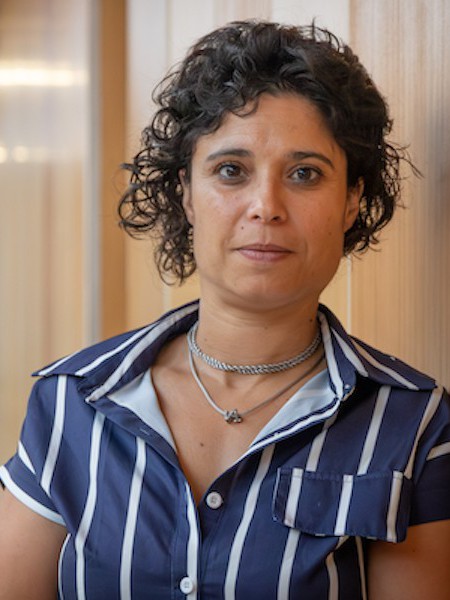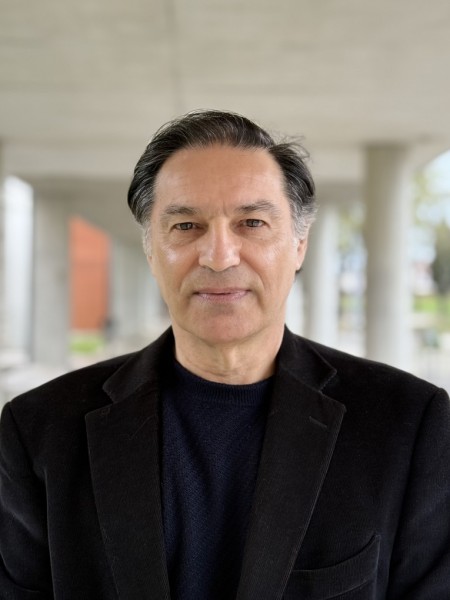resumo
Hypothesis: The aggregation of phthalocyanines (Pcs) enfeebles their suitability as G-quadruplex (G4) ligands over time. It is hypothesized that the interfacial assembly of Pcs on graphene oxide (GO) influences intermolecular interactions, thereby affecting their physicochemical properties and inducing stabilization of Pcs in solution. Hence, the stacking of Pcs on GO could be tuned to create nanosystems with the ability to detect G4 for longer periods through a slow release of Pcs. Experiments: Four cationic structurally-related zinc(II) phthalocyanines (ZnPc) were non-covalently assembled on GO by ultrasonic exfoliation. A comprehensive characterization of ZnPcs@GO was carried out by spectroscopic techniques and electron microscopy to understand the organization of ZnPcs on GO. The fluorescence of ZnPcs@GO was studied in the presence of G4 (T2G5T)4 and duplex ds26 through spec-trofluorimetric titrations and monitored along time. Findings: GO induced a re-organization of the ZnPcs mostly to J-aggregates and quenched their original fluorescence up to 98 % ( turn-off ). In general, ZnPcs@GO recovered their fluorescence ( turn-on ) after the titrations and showed affinity to G4 (KD up to 1.92 mu M). This is the first report that highlights the con-tribution of GO interfaces to assemble ZnPcs and allow their slow and controlled release to detect G4 over longer periods. (c) 2022 Elsevier Inc. All rights reserved.
palavras-chave
NONLINEAR-OPTICAL PROPERTIES; NONCOVALENT LINKING; FLUORESCENT-PROBES; DNA; BINDING; STABILITY; PORPHYRIN; COVALENT; STABILIZATION; DERIVATIVES
categoria
Chemistry
autores
Monteiro, AR; Ramos, CIV; Lourenco, LMO; Fateixa, S; Rodrigues, J; Neves, MGPMS; Trindade, T
nossos autores
Projectos
CICECO - Aveiro Institute of Materials (UIDB/50011/2020)
CICECO - Aveiro Institute of Materials (UIDP/50011/2020)
Associated Laboratory CICECO-Aveiro Institute of Materials (LA/P/0006/2020)
agradecimentos
The authors are grateful to the University of Aveiro and to the Fundacao para a Ciencia e a Tecnologia (FCT) for the financial support to LAQV-REQUIMTE (UIDB/50006/2020) and CICECO-Aveiro Institute of Materials (UIDB/50011/2020, UIDP/50011/2020 & LA/P/0006/2020), financed by national funds through the FCT/MEC (PIDDAC). Ana R. Monteiro thanks the FCT for the PhD grant SFRH/BD/137356/2018. Sara Fateixa and Catarina I. V. Ramos acknowledge the costs of their research contracts (REF.-069-88-ARH/2018 and REF.-047-88-ARH/2018, respectively) resulting from the FCT hiring funded by National funds (OE), through FCT, I.P., in the scope of the framework contract foreseen in the numbers 4, 5, and 6 of the article nr. 23, of the Decree-Law 57/2016, of August 29, changed by the law 57/2017, of July 19. Leandro M. O. Lourenco thanks the FCT funding of the project P2020-PTDC/QUI-QOR/31770/2017 through national funds and, where applicable, co-financed by the FEDER, within the PT2020 Partnership Agreement. J. Rodrigues acknowledges i3N project UIDB/50025/2020 & UIDP/50025/2020 & LA/P/0037/2020 and project PTDC/NAN-MAT/28755/2017 (POCI-01-0145-FEDER-028755), financed by national funds through the FCT/MEC and supported by FEDER funds through the COMPETE 2020 Programme. Graphical content was partially designed with BioRender.





